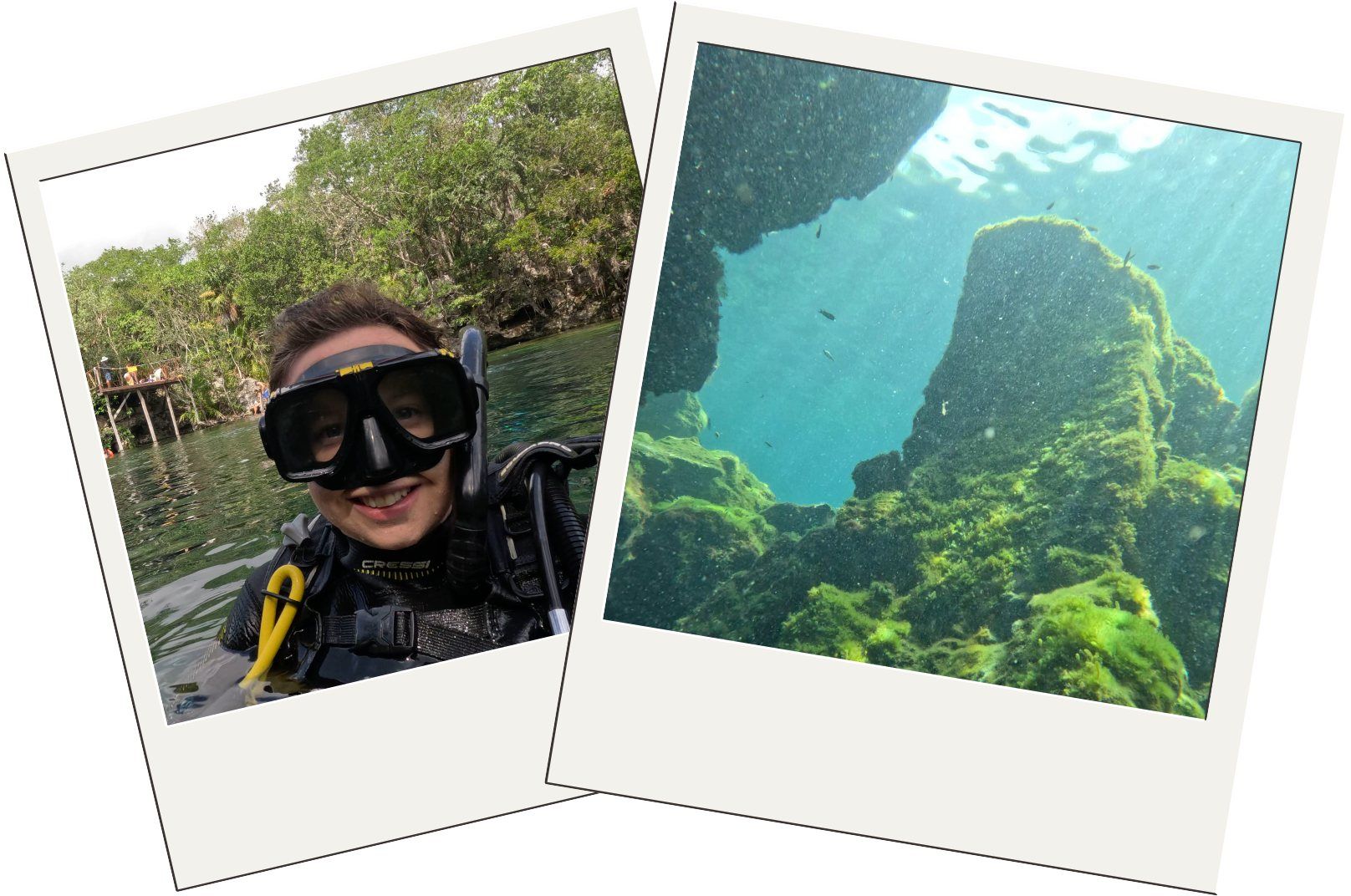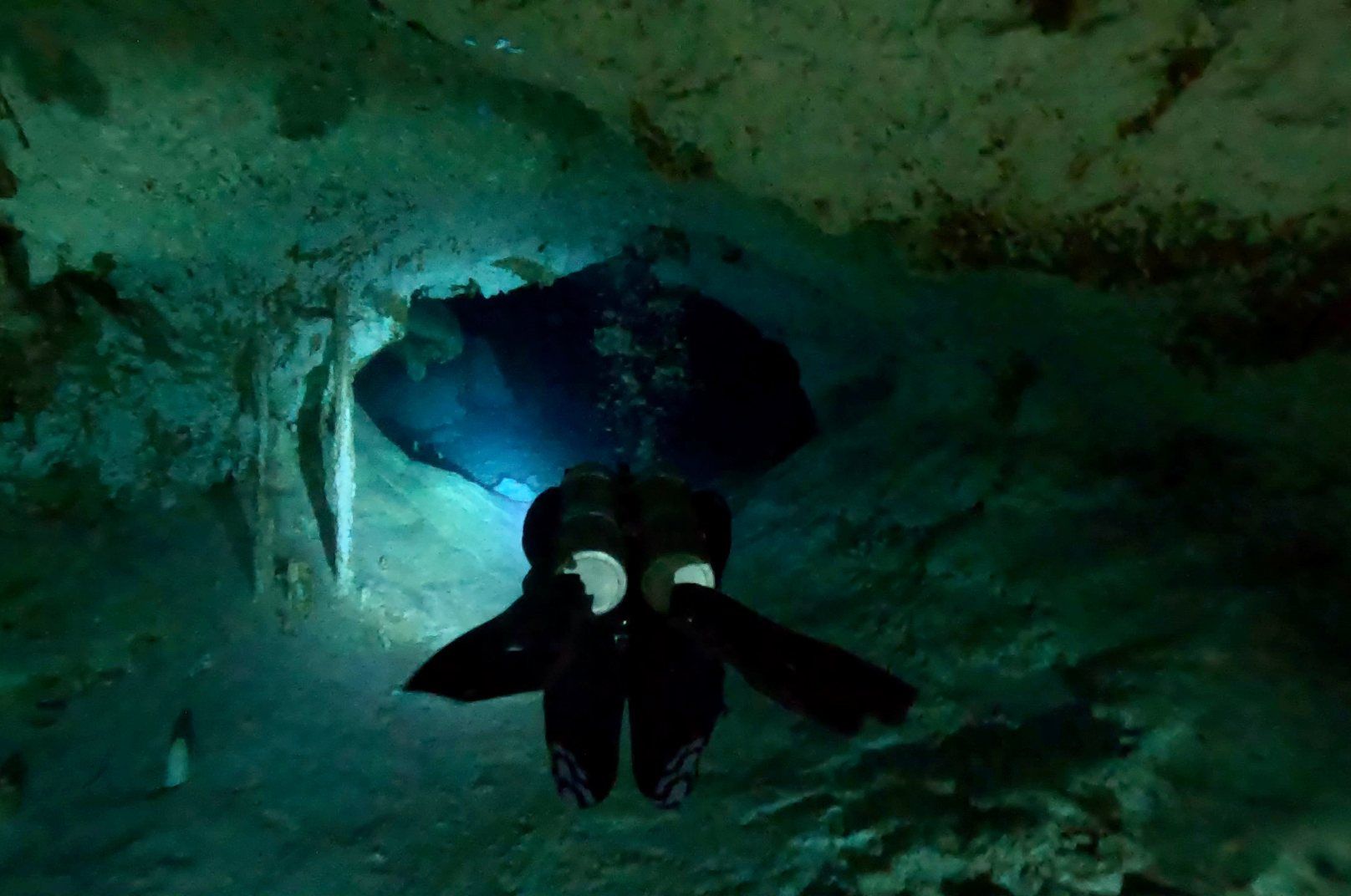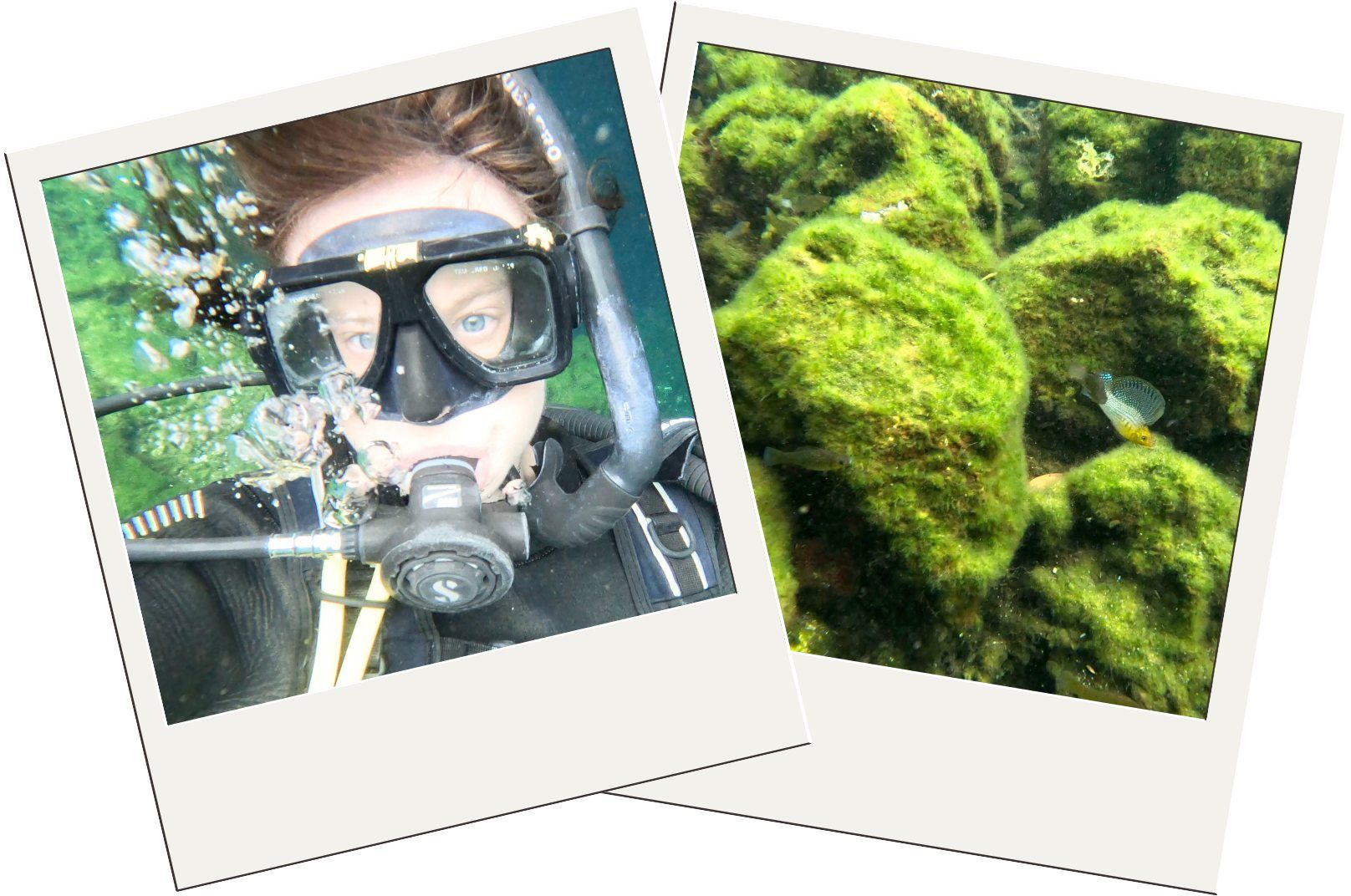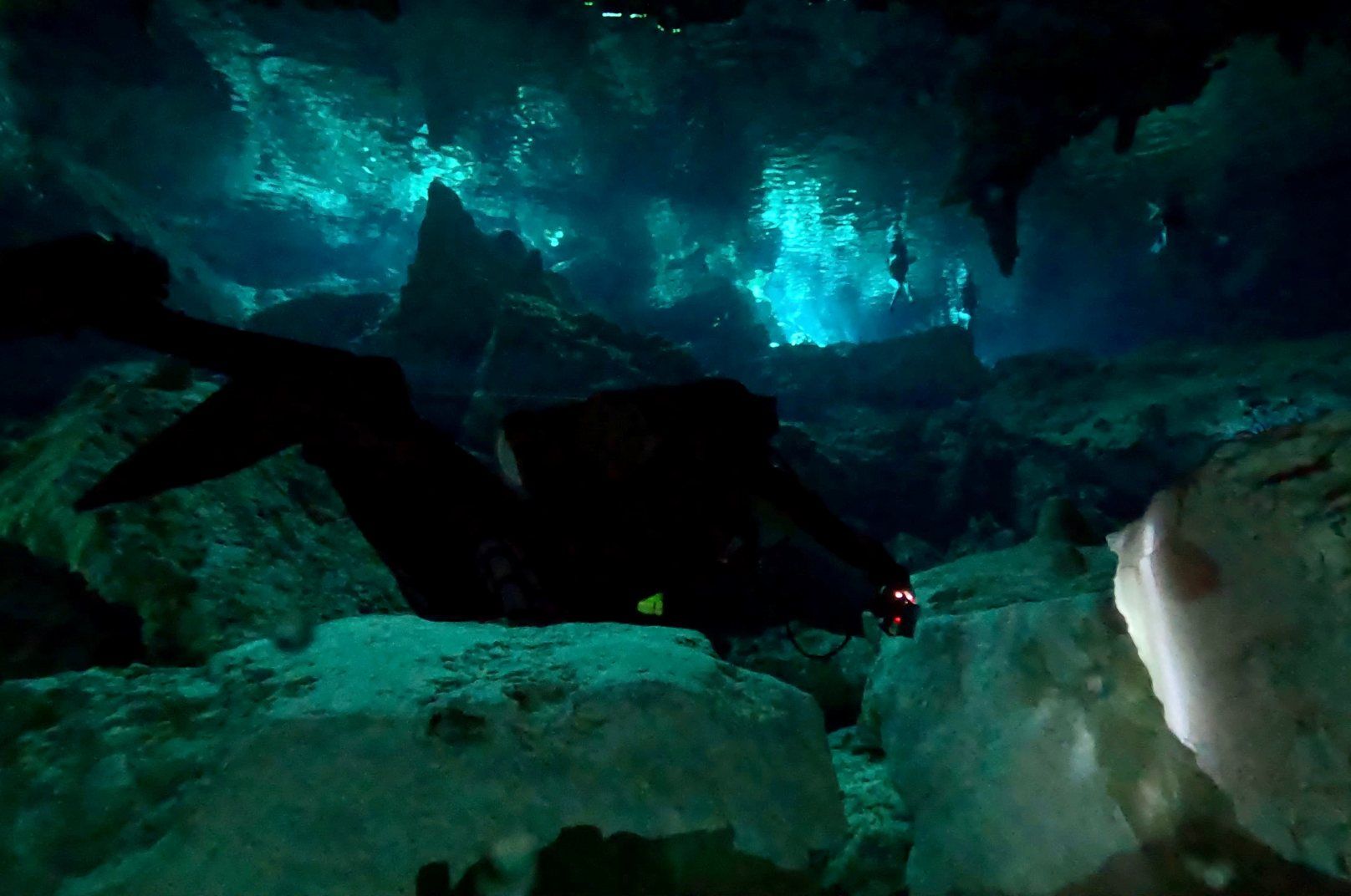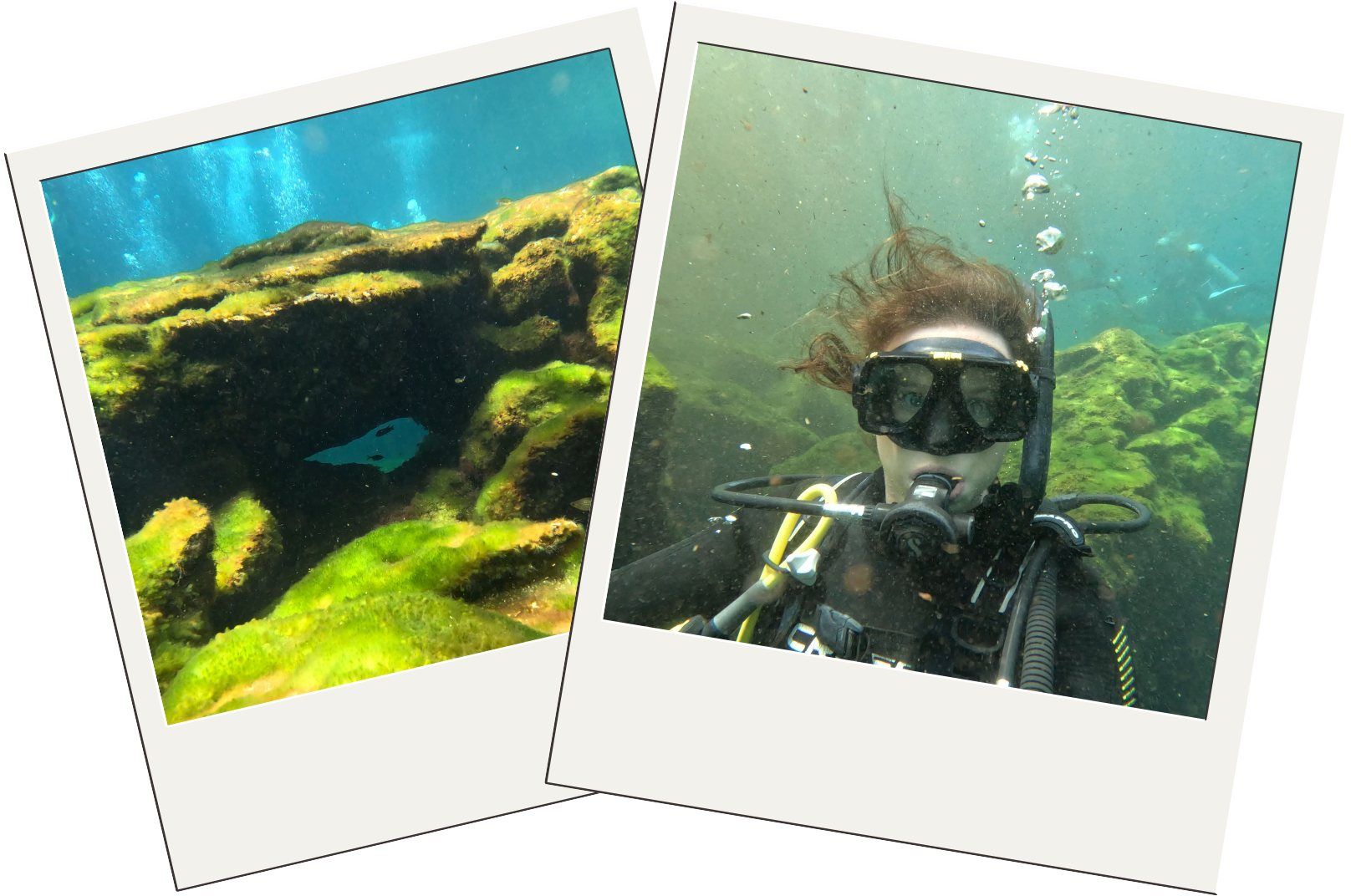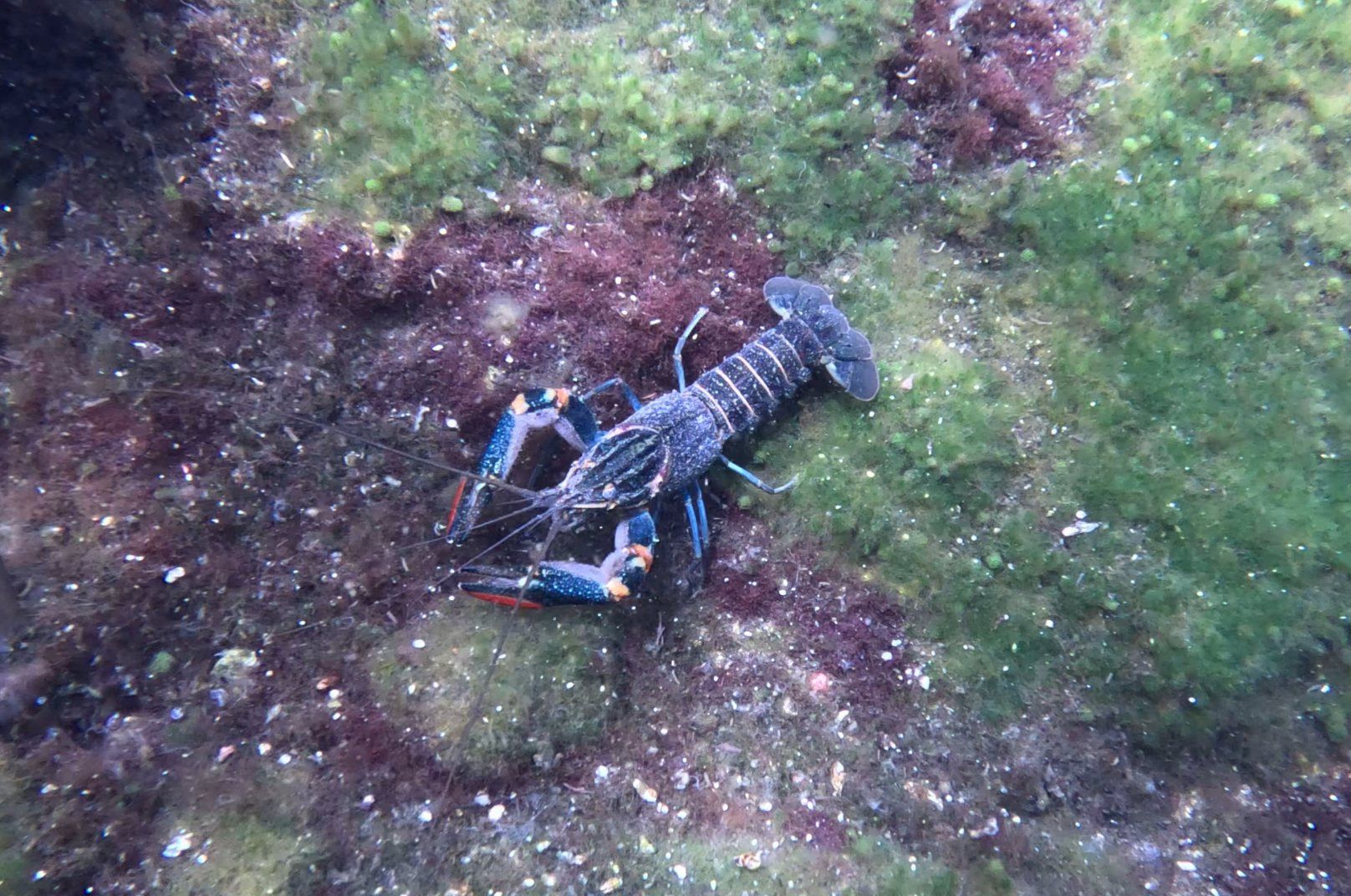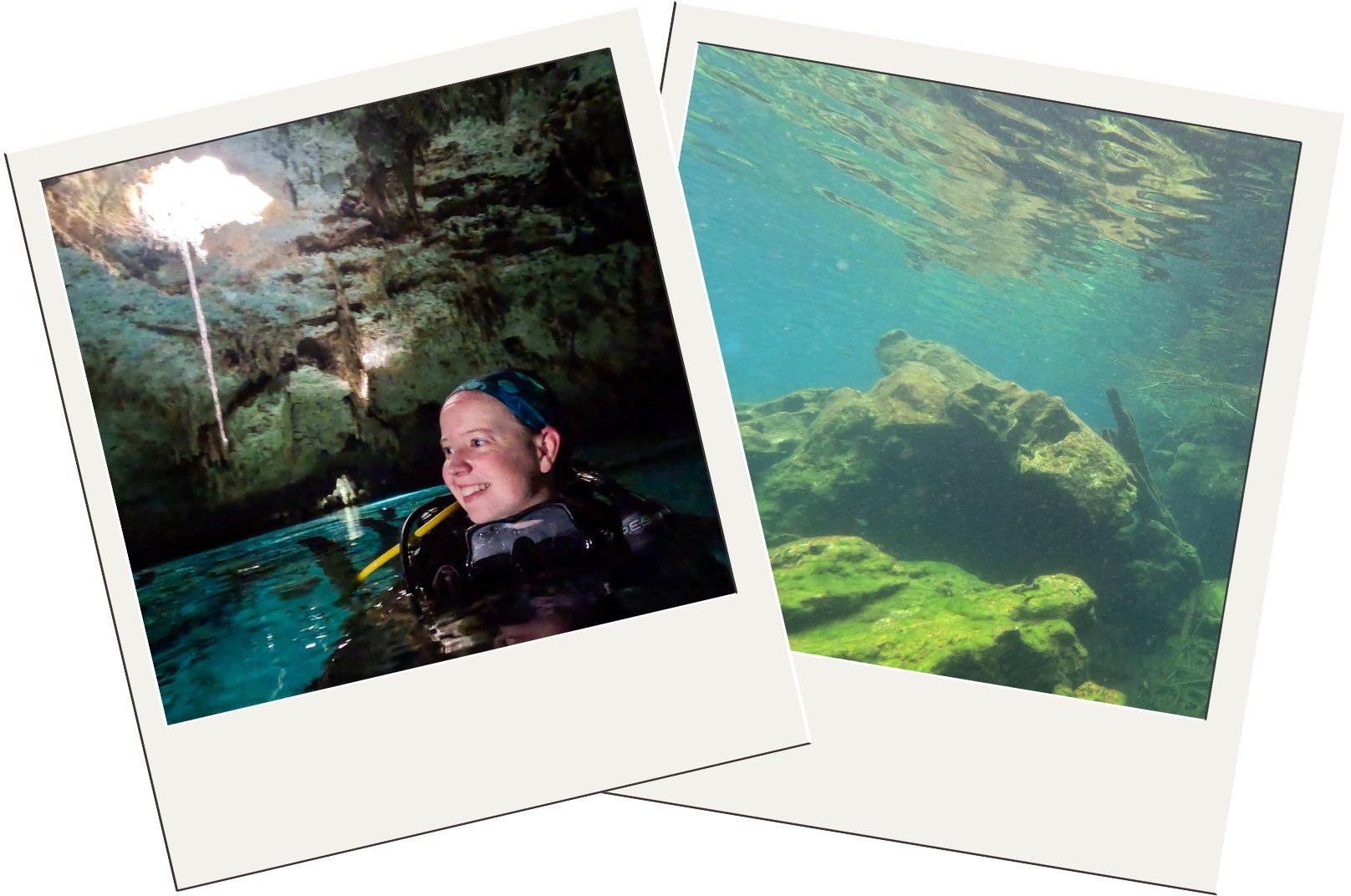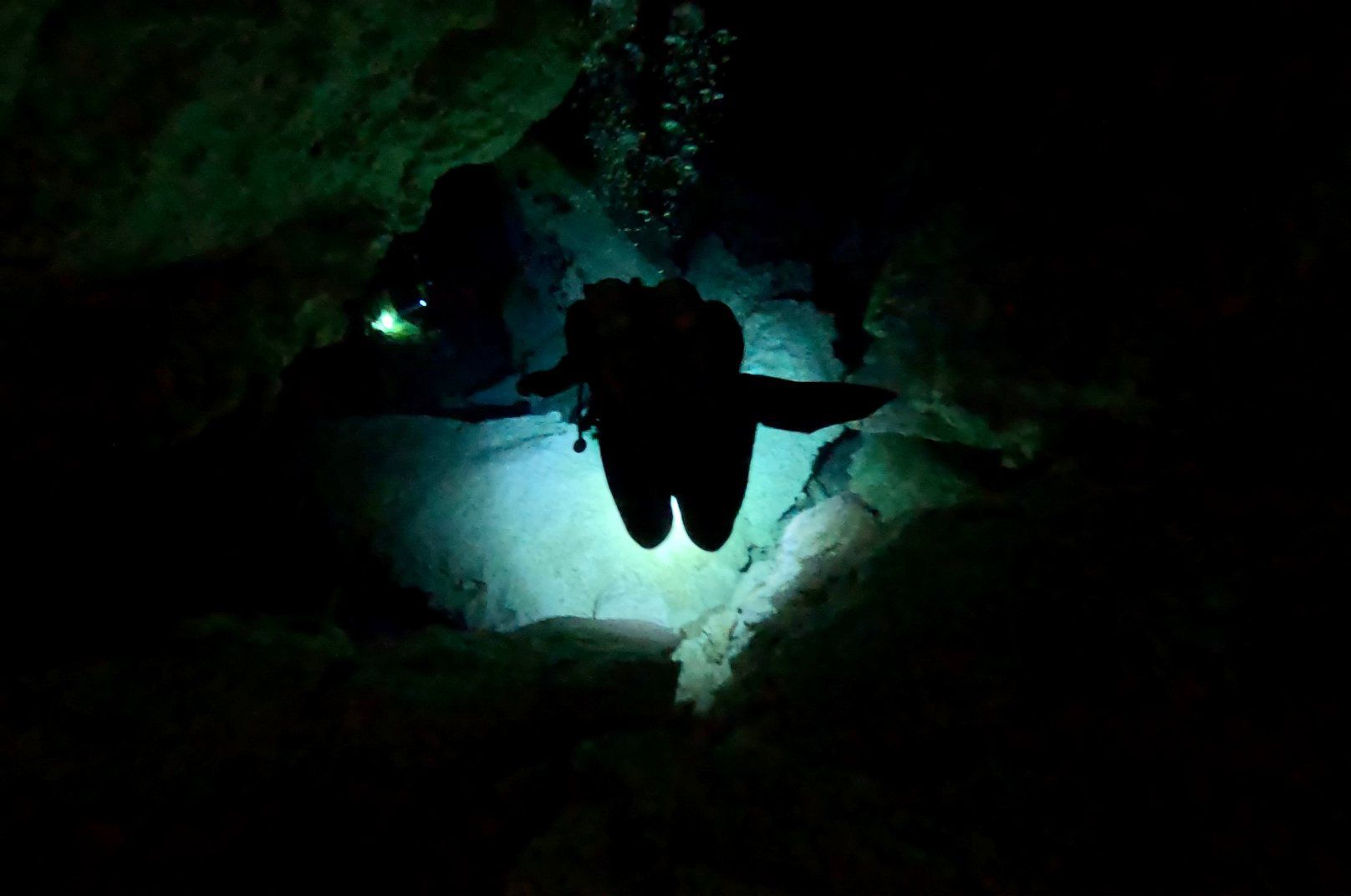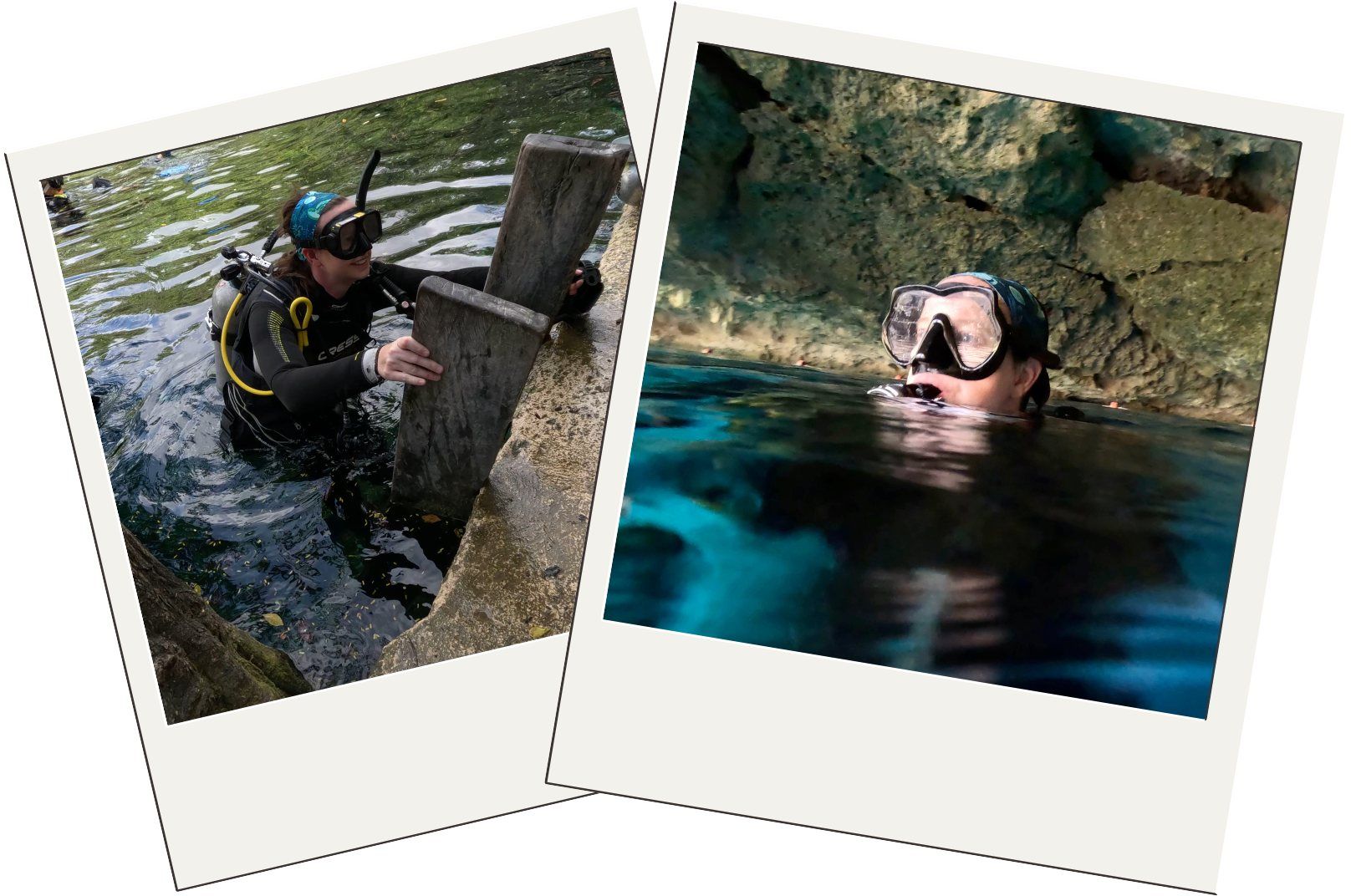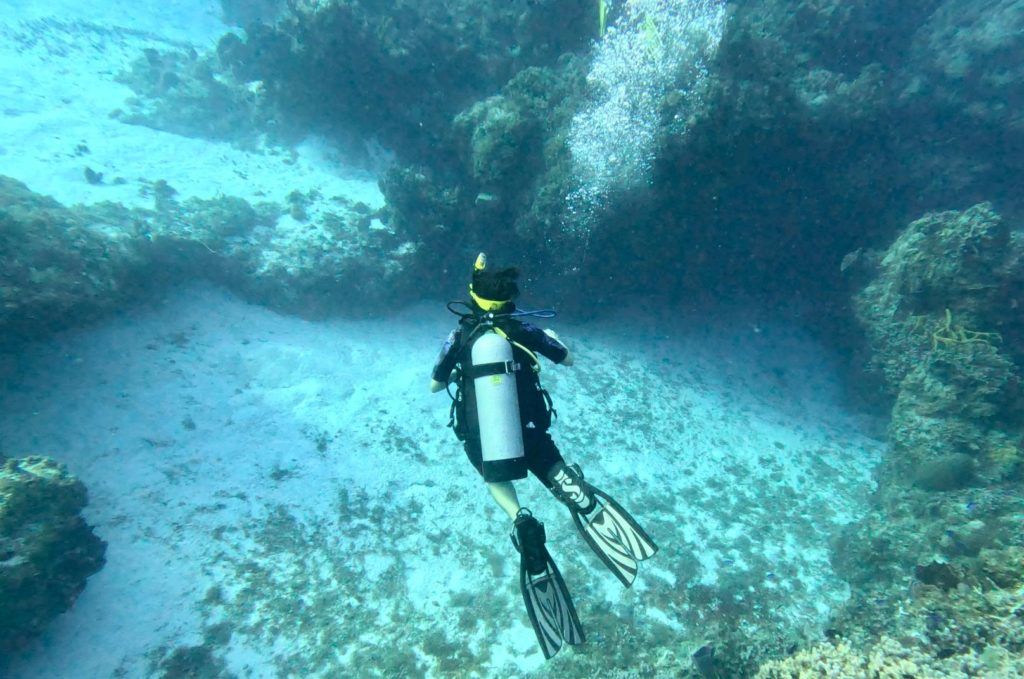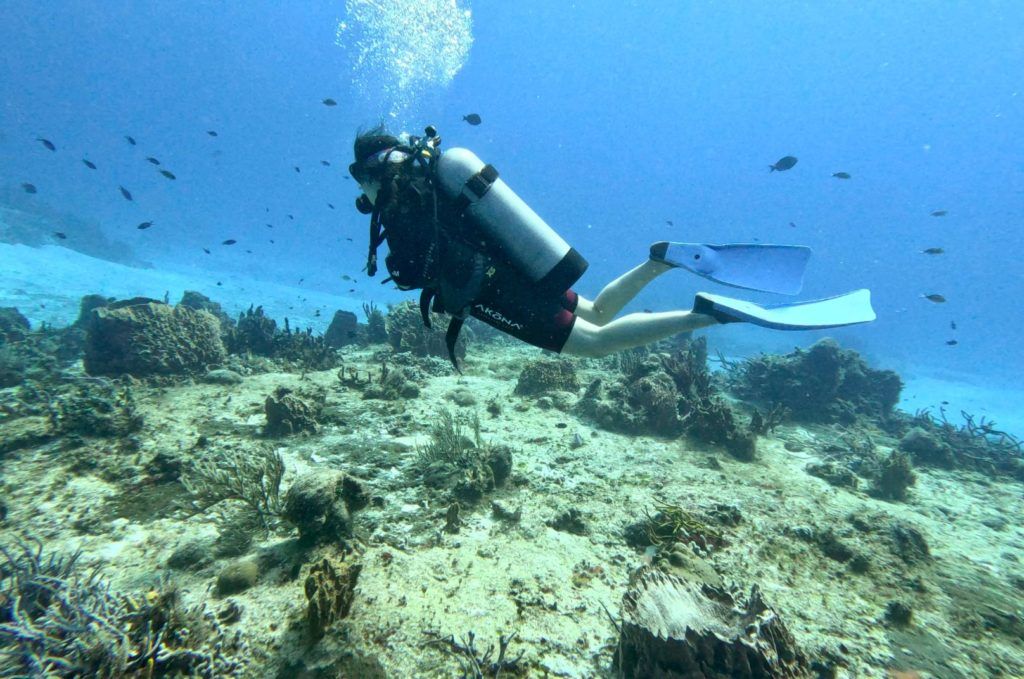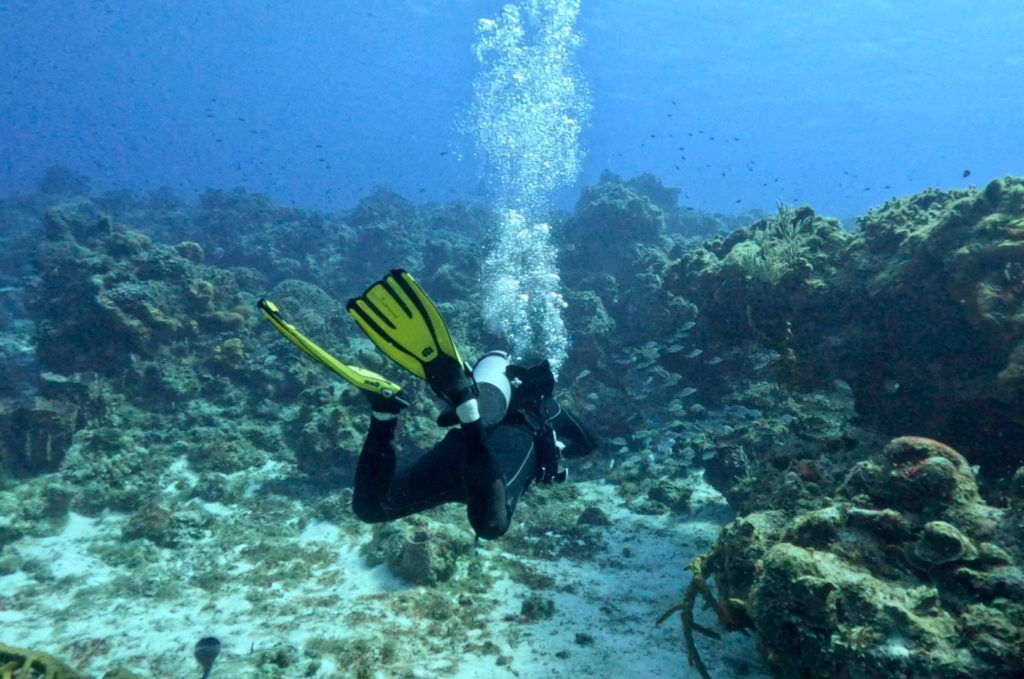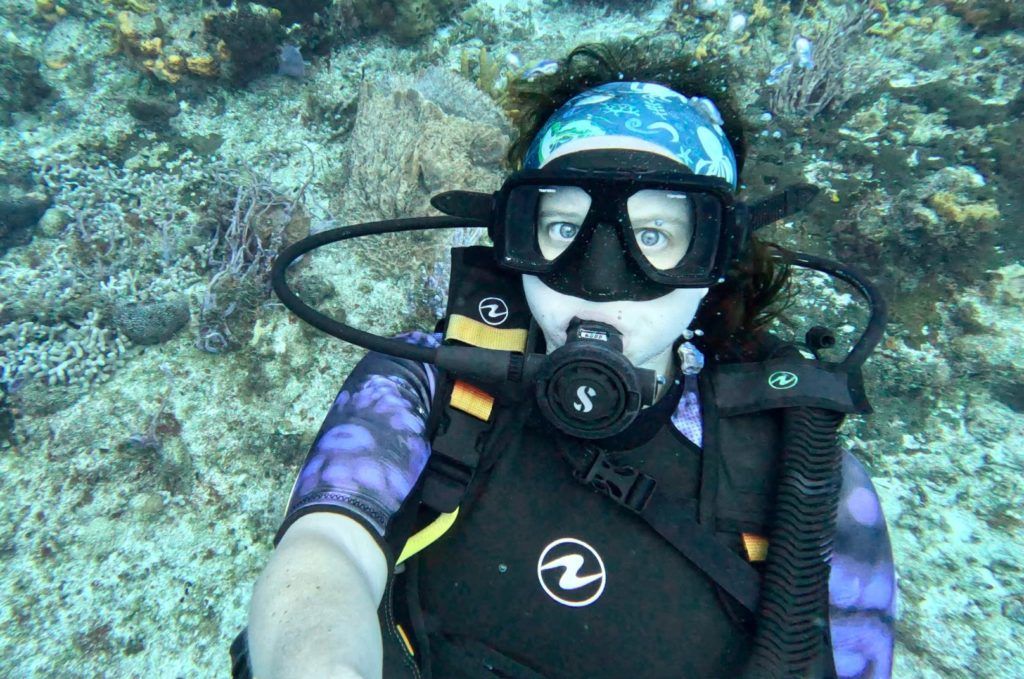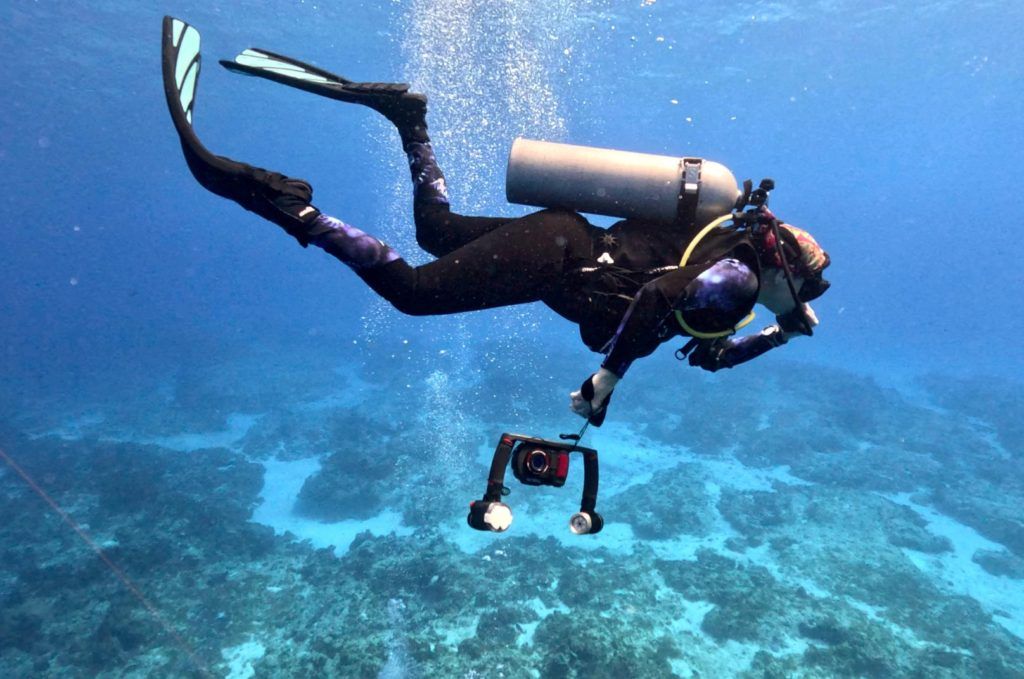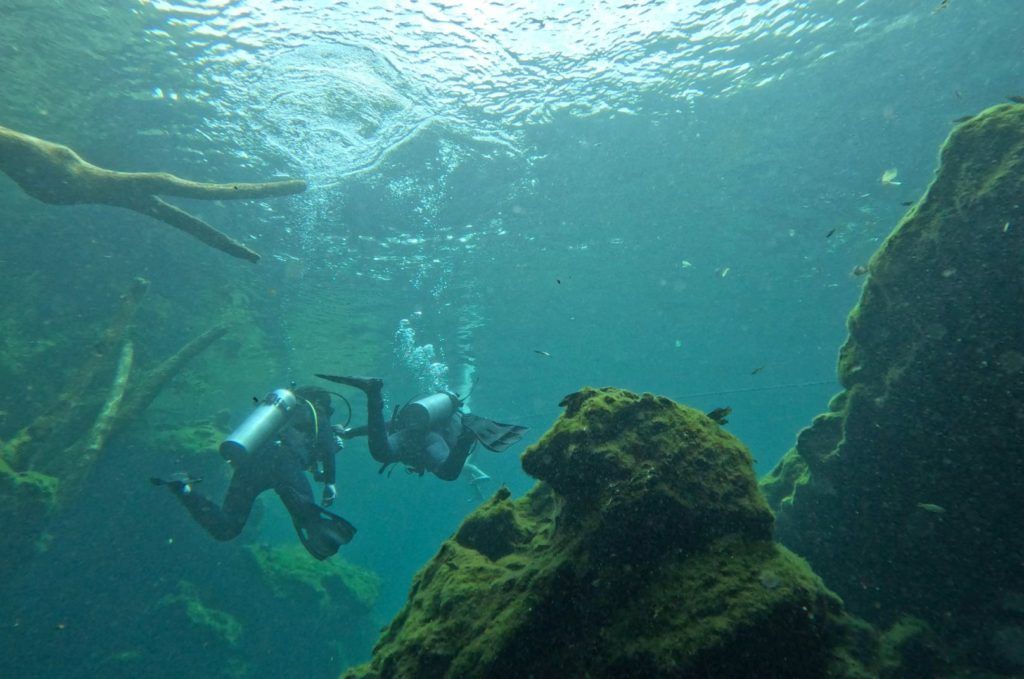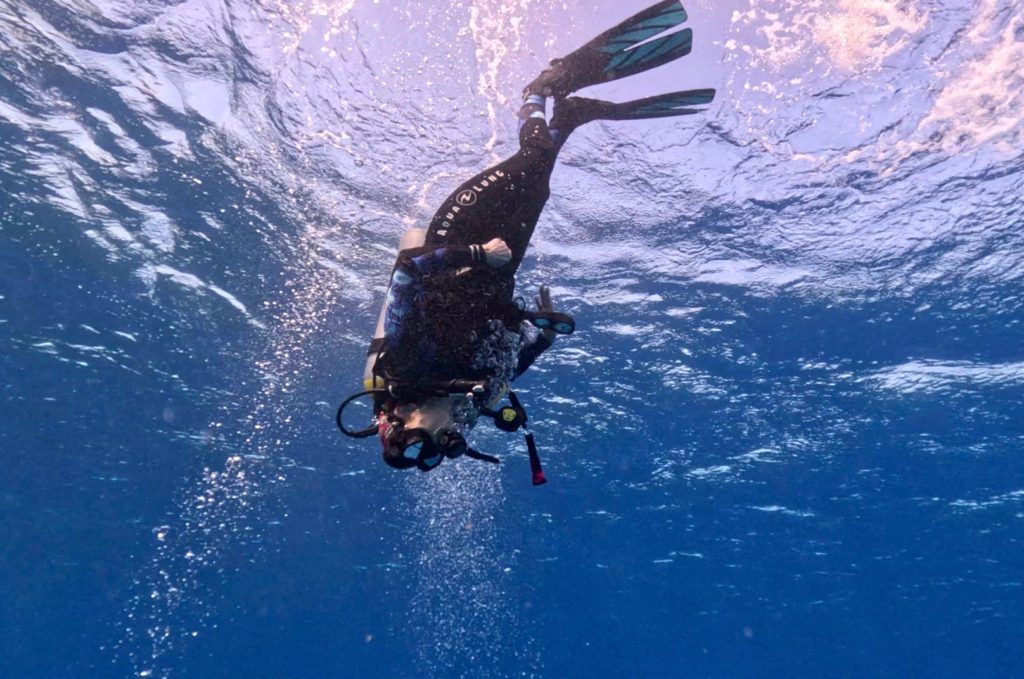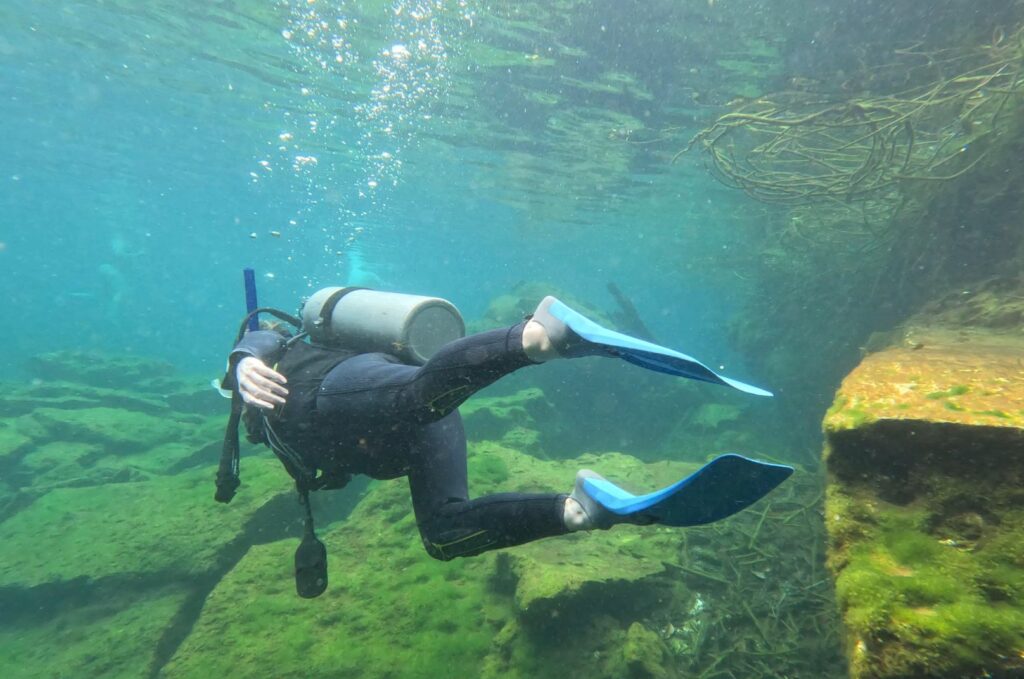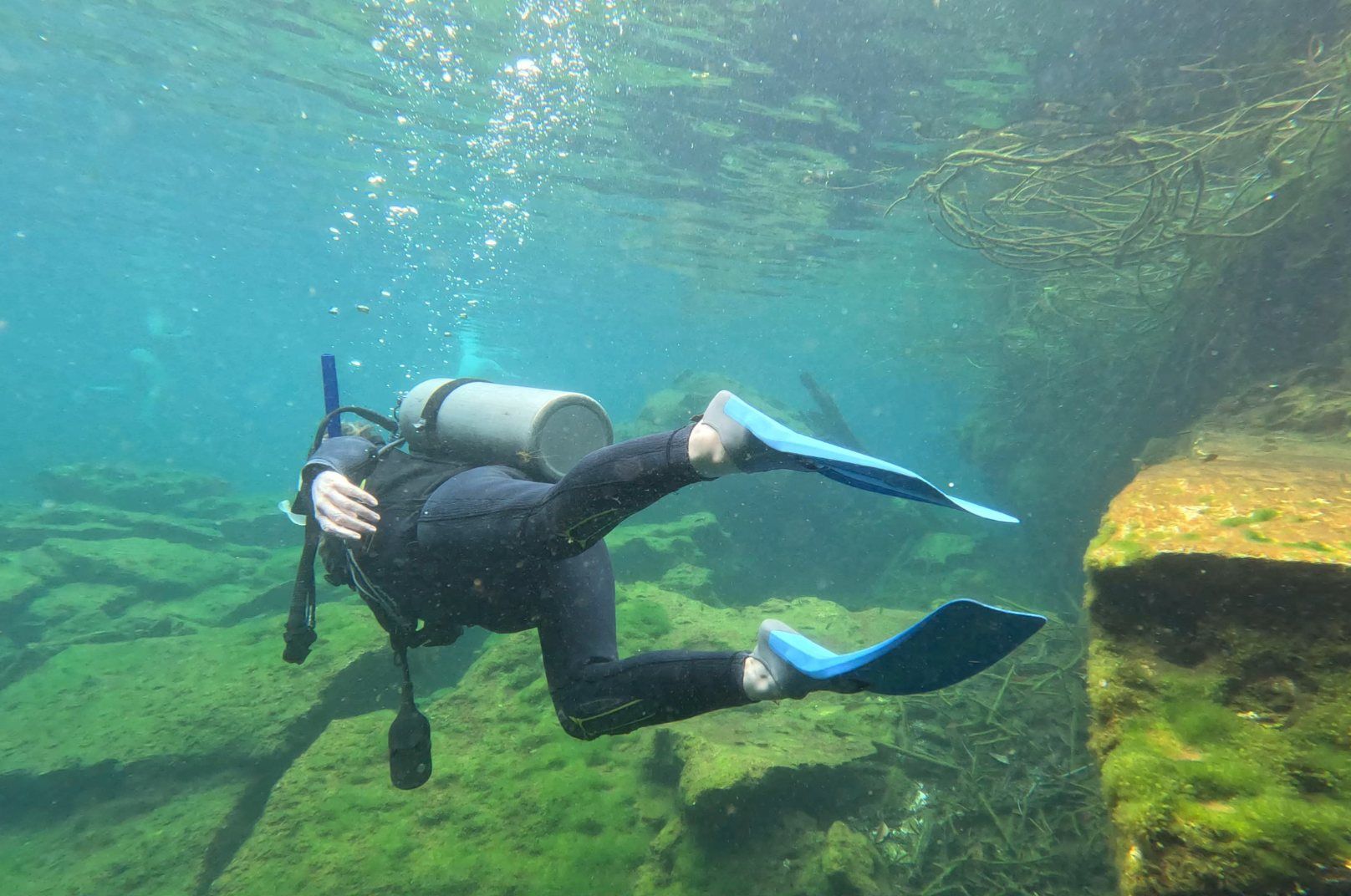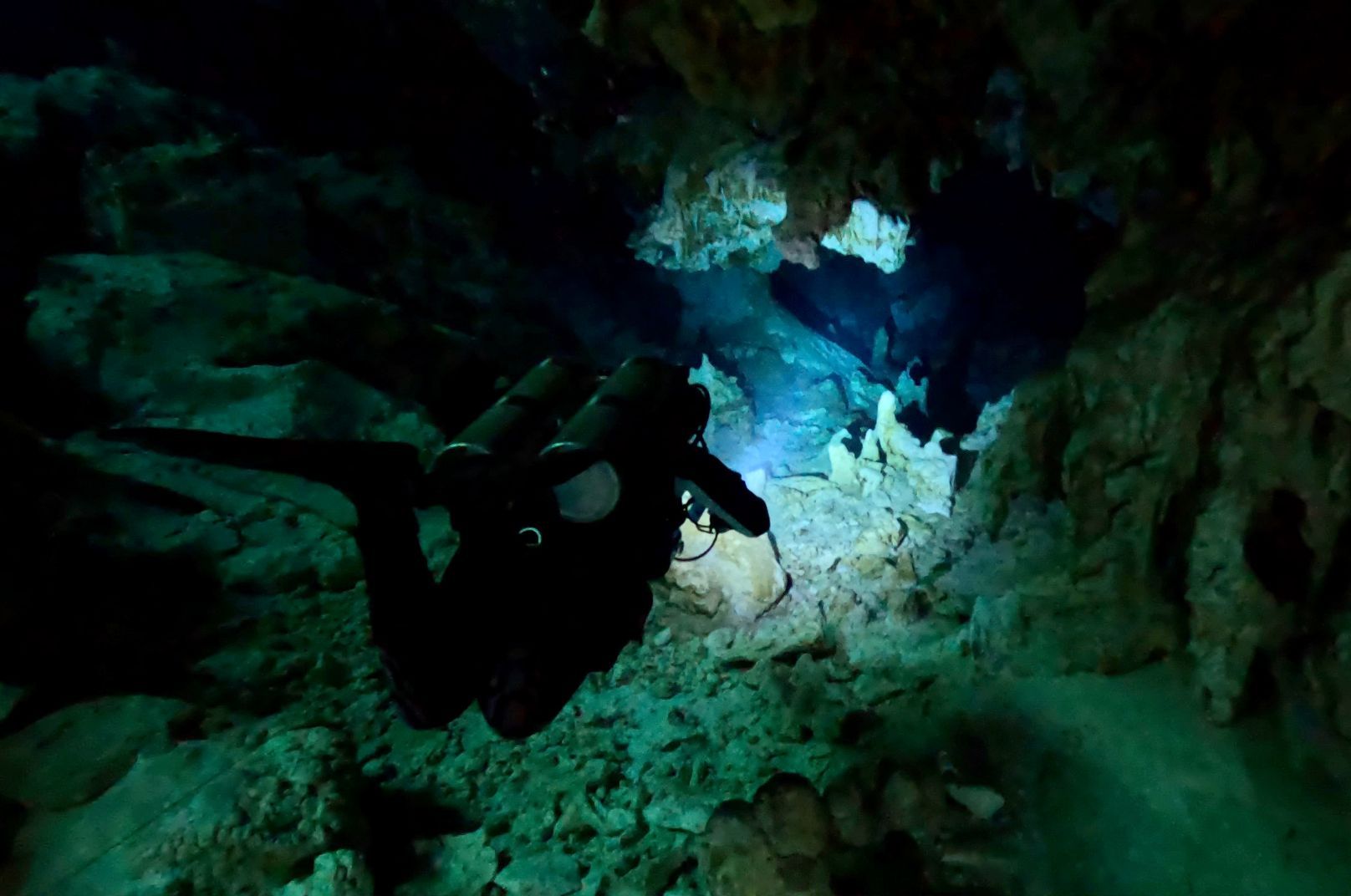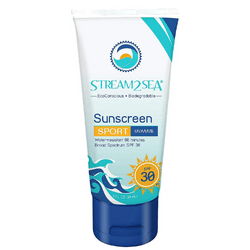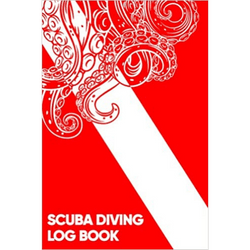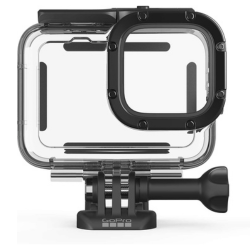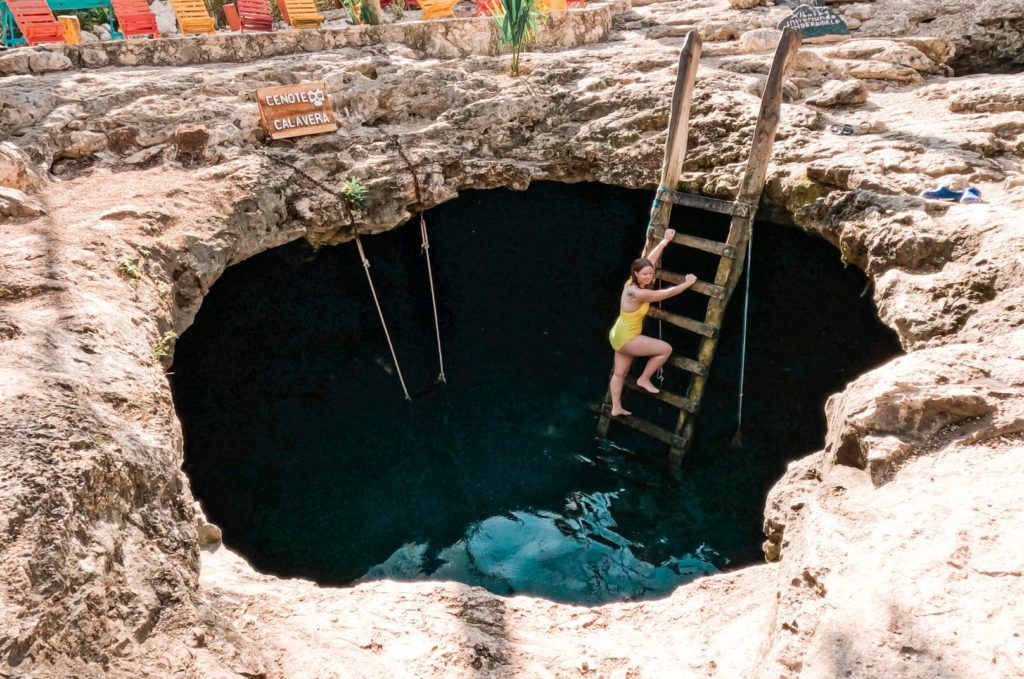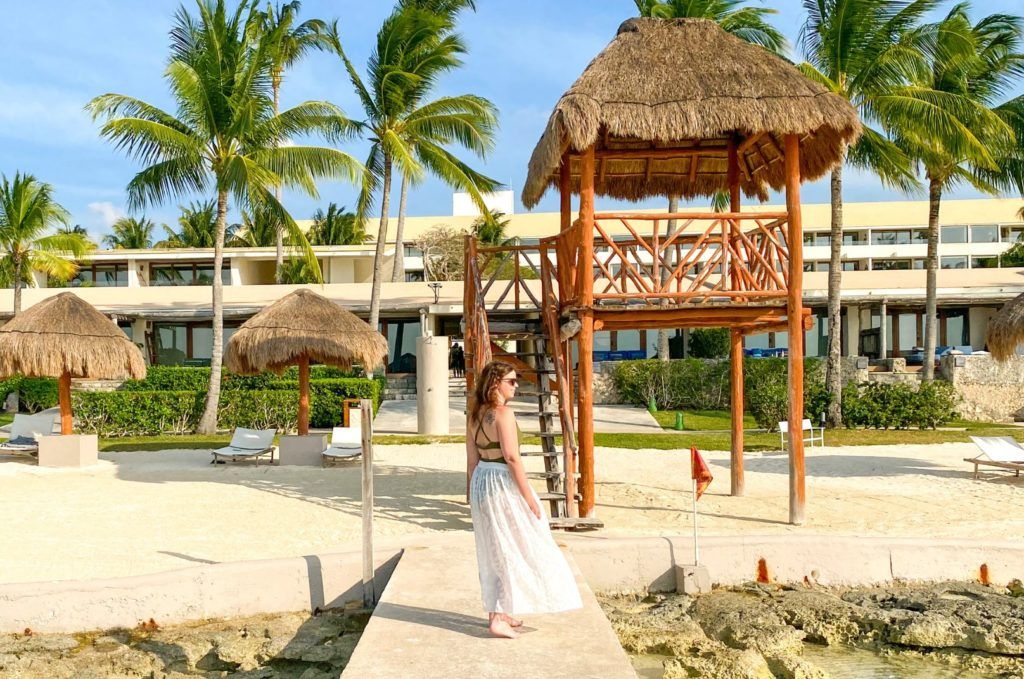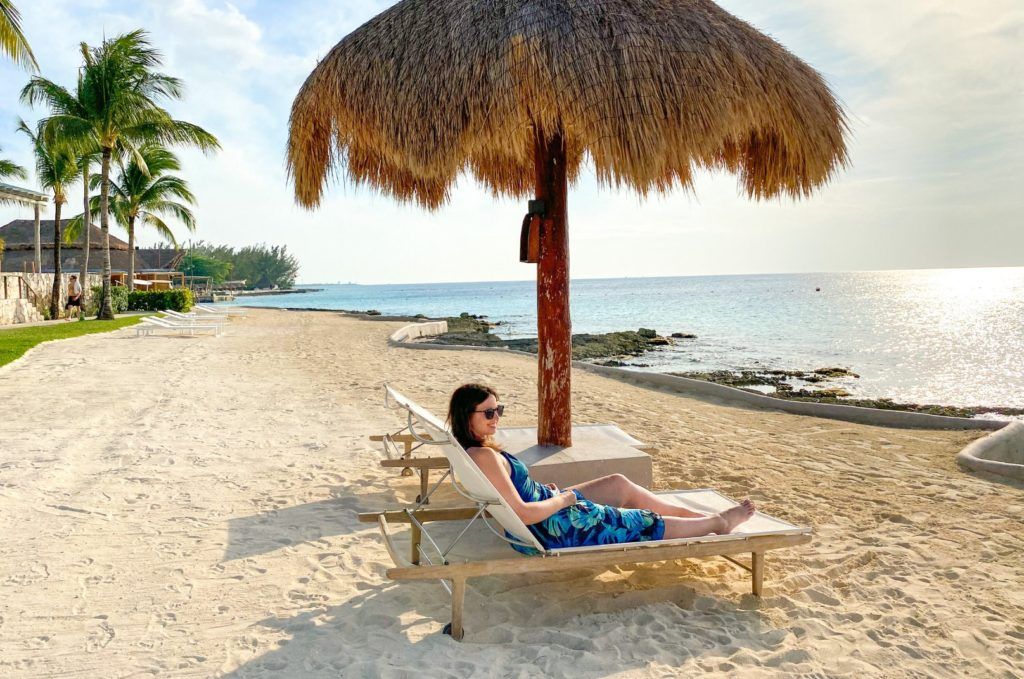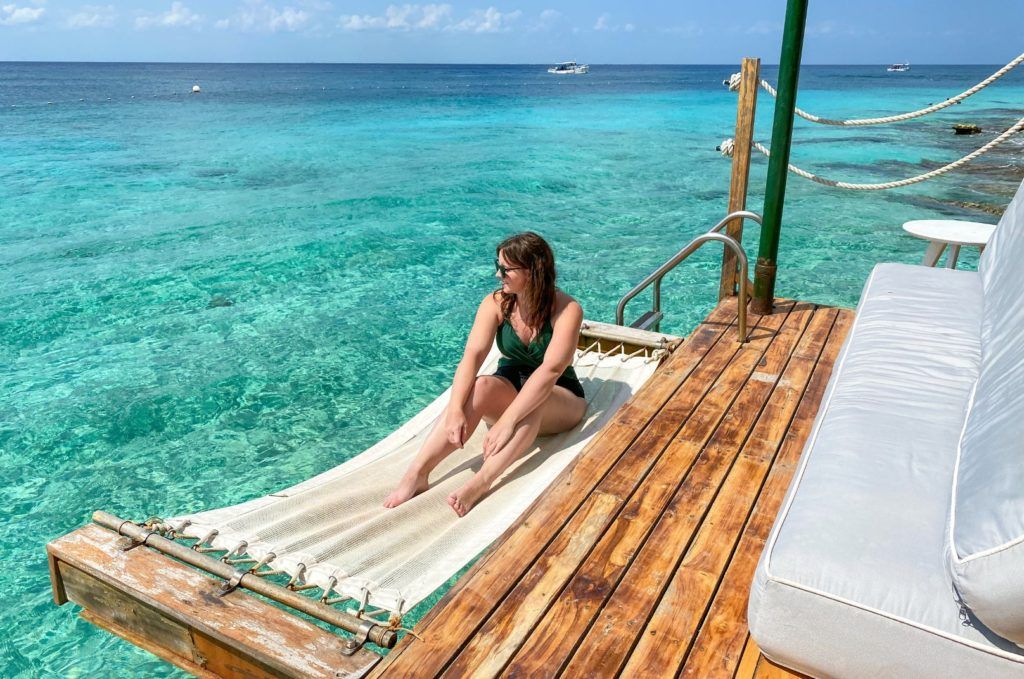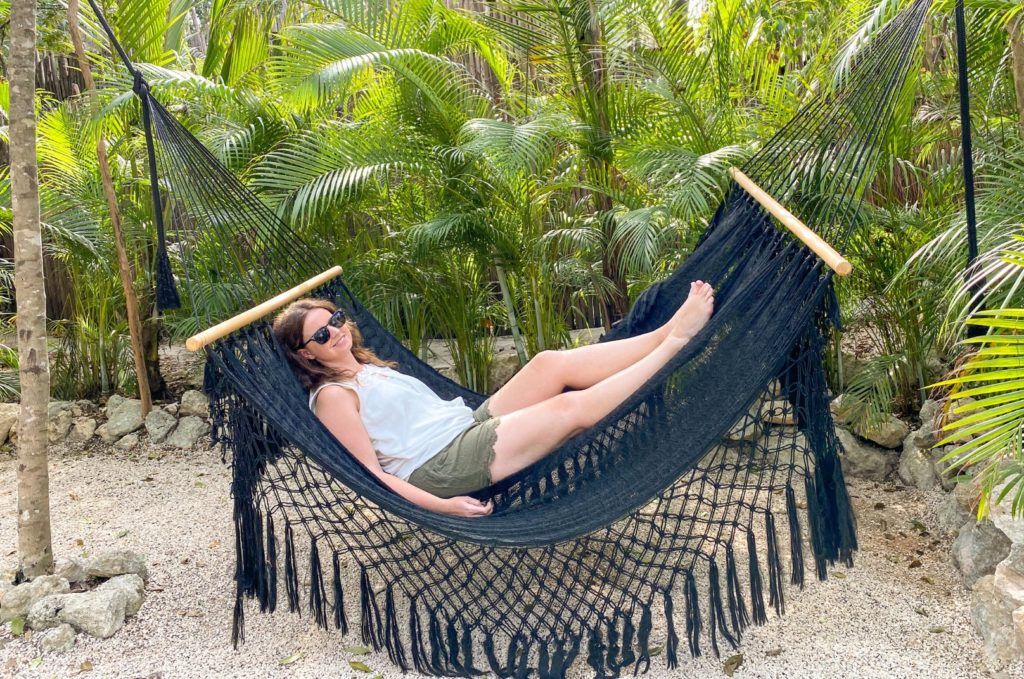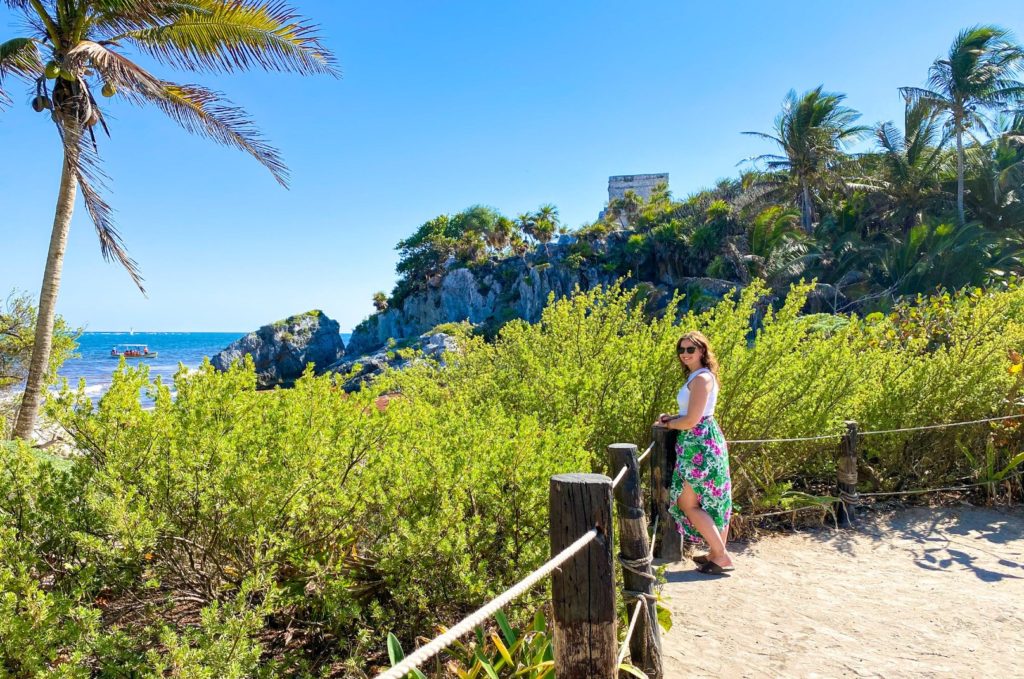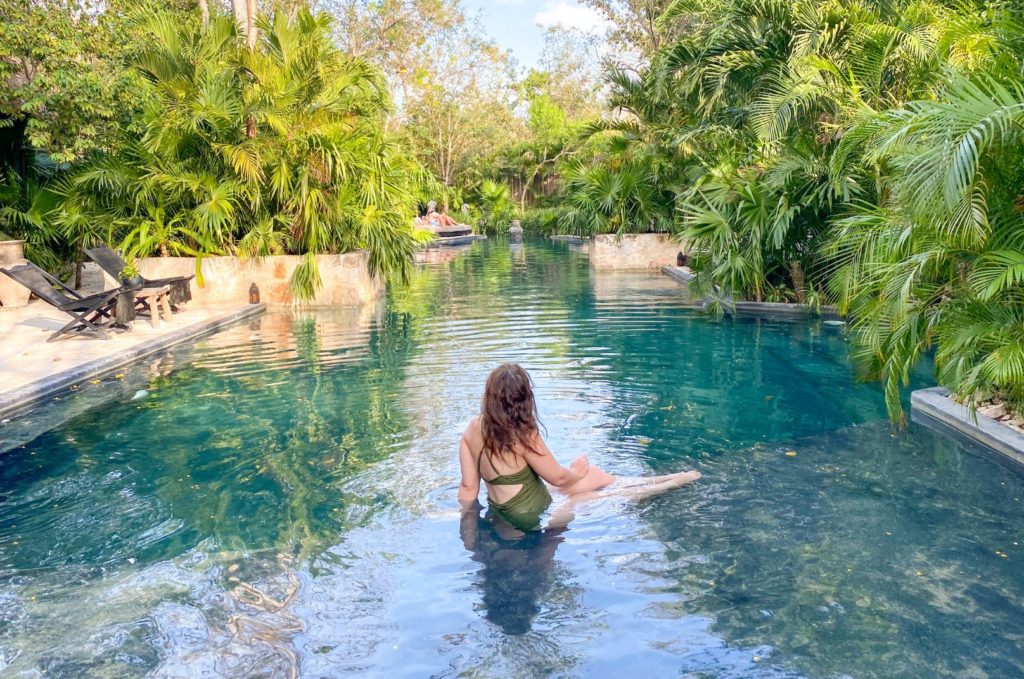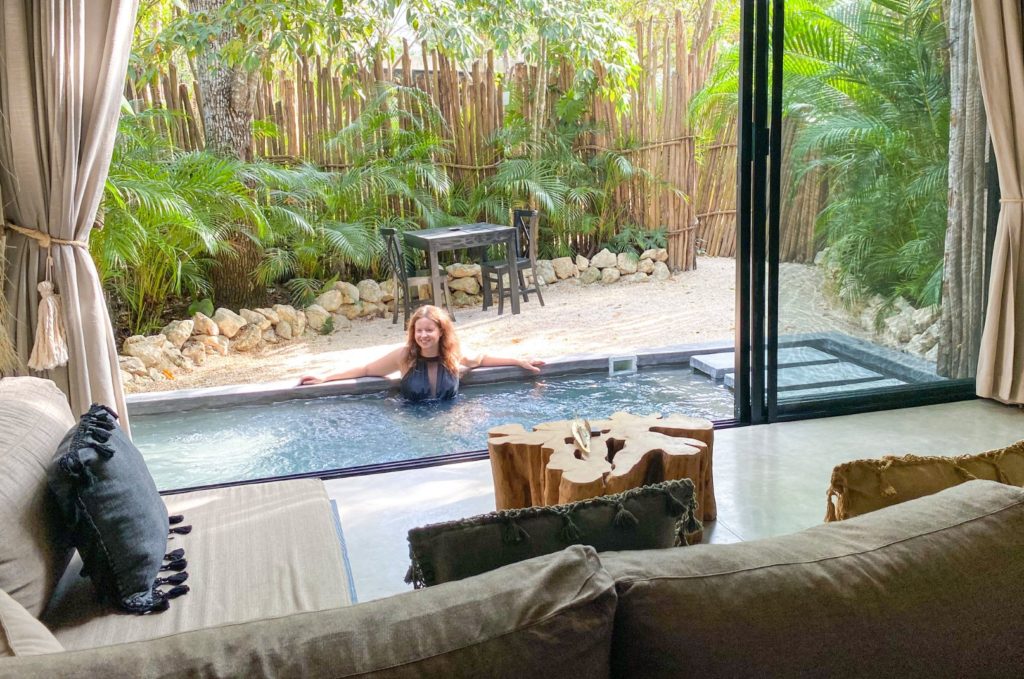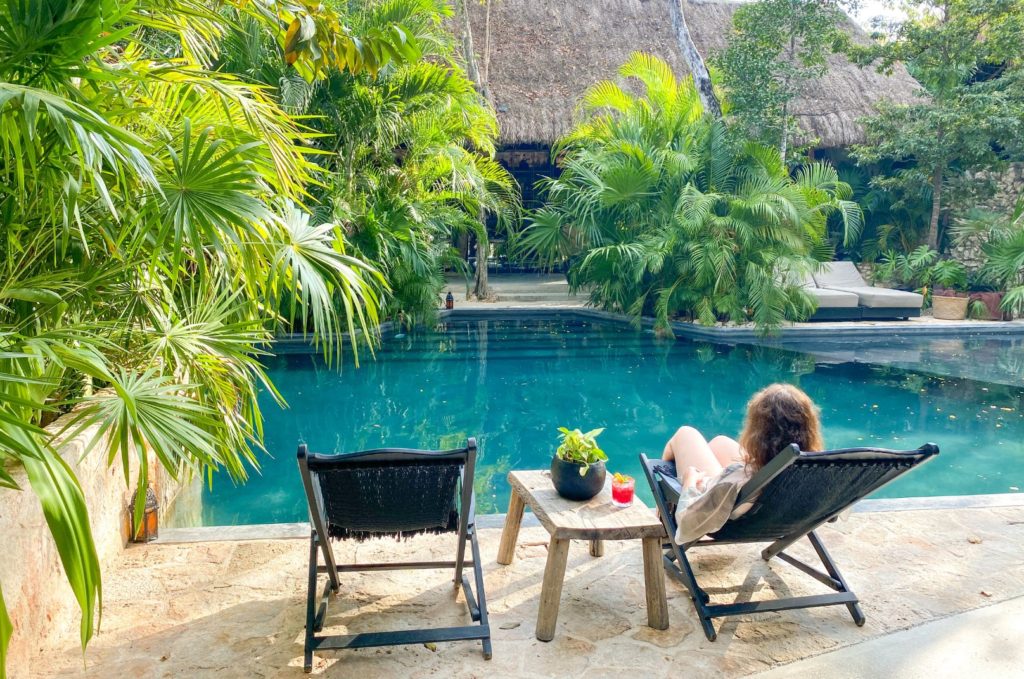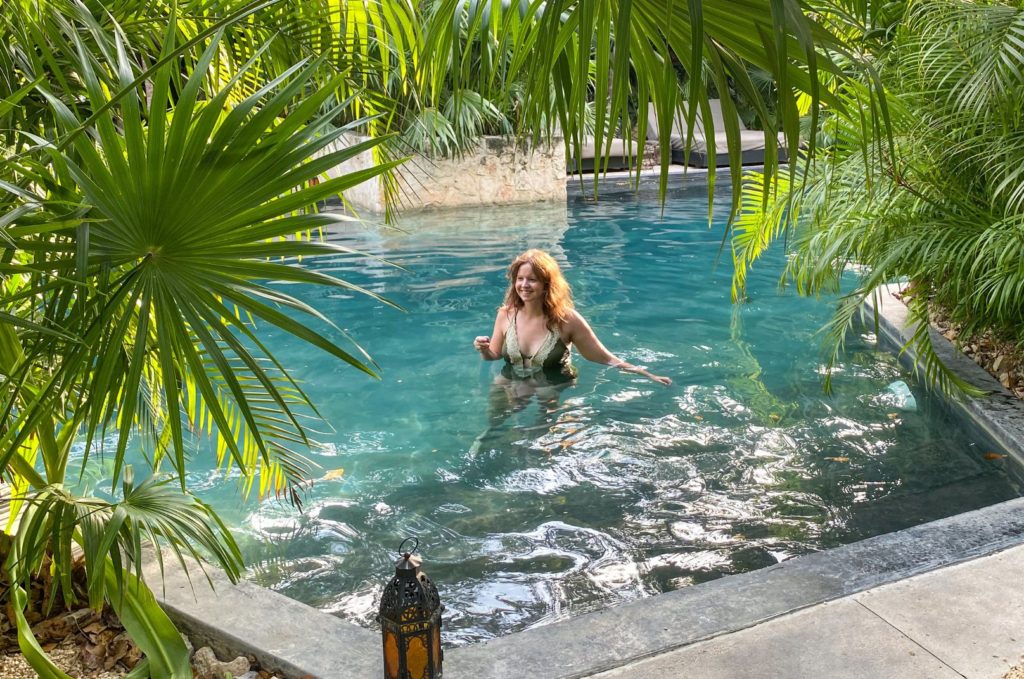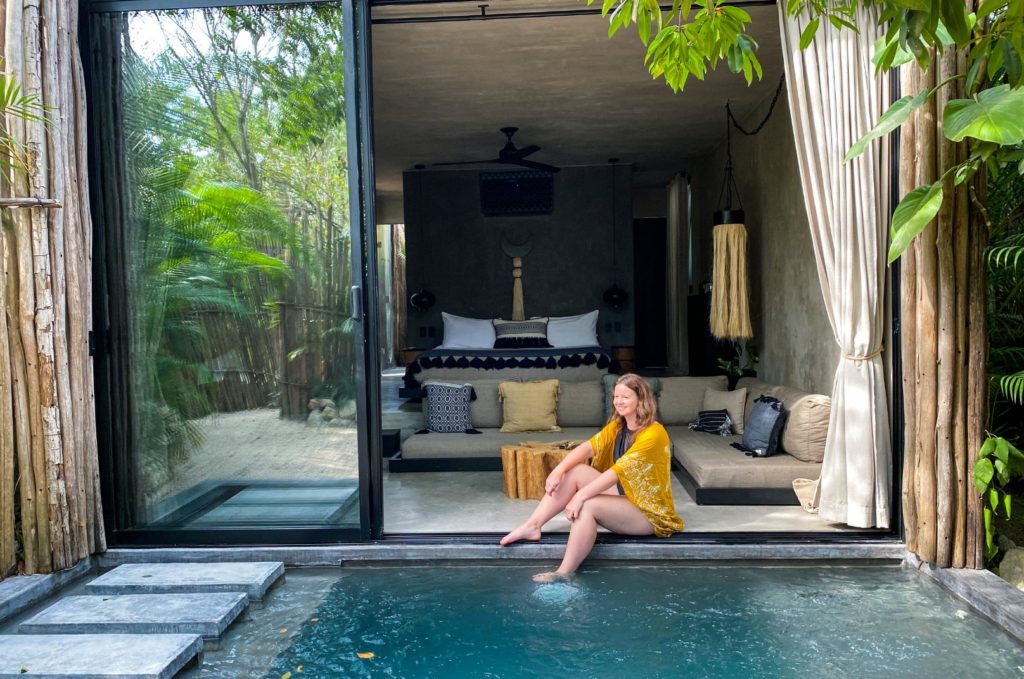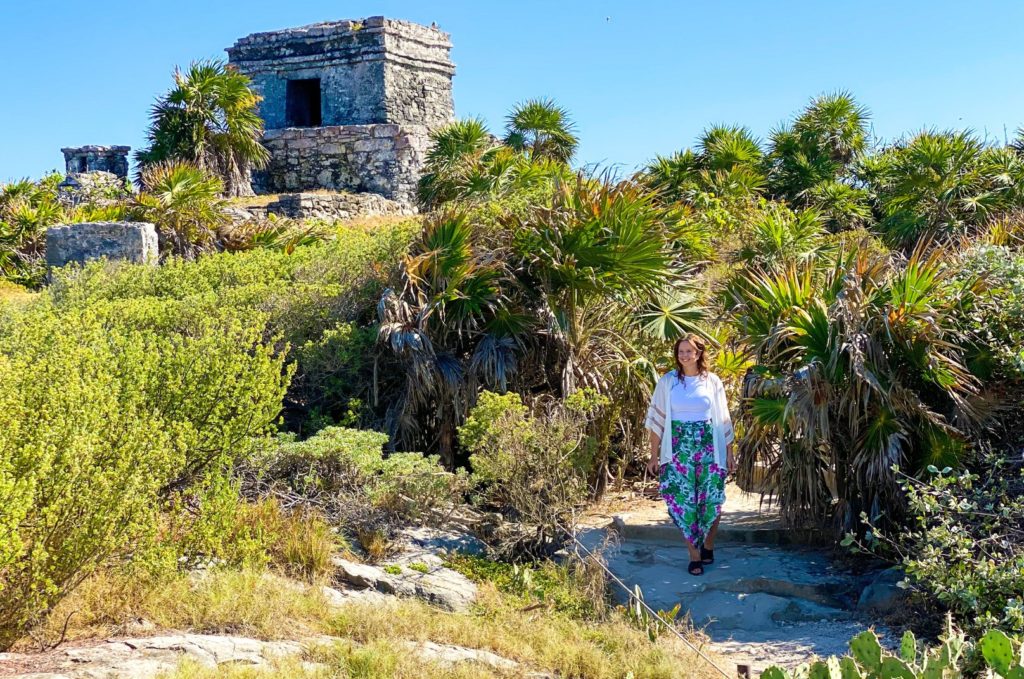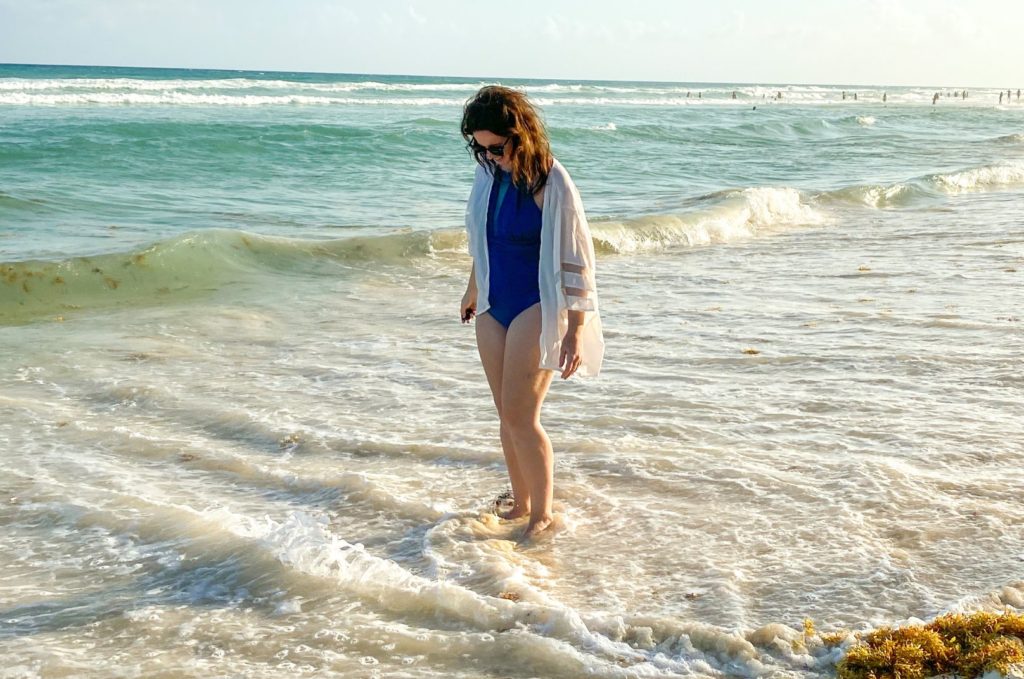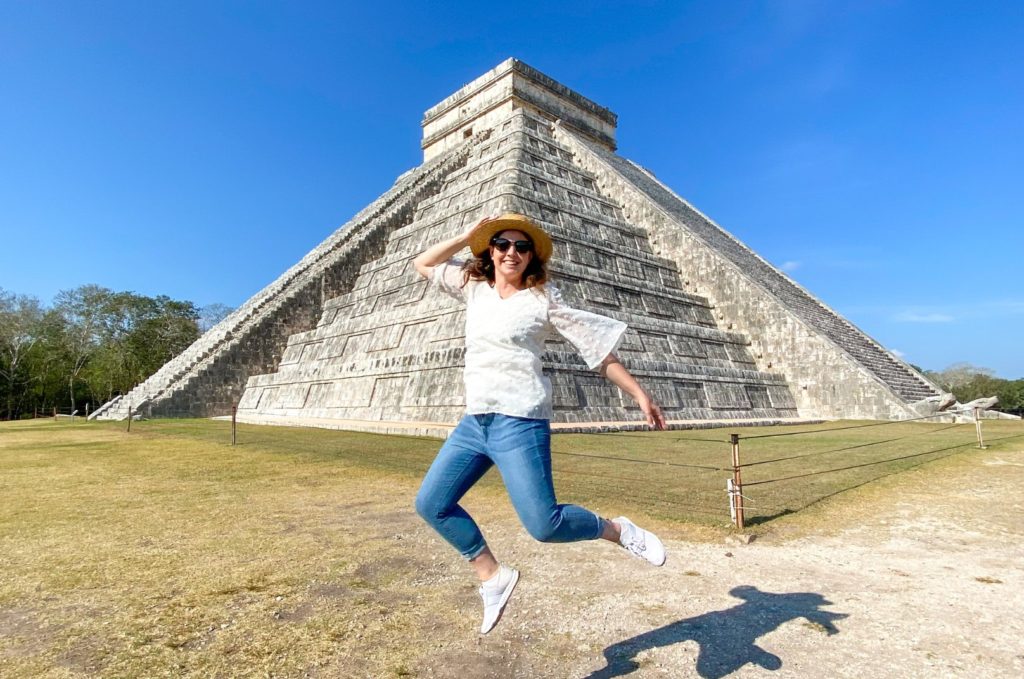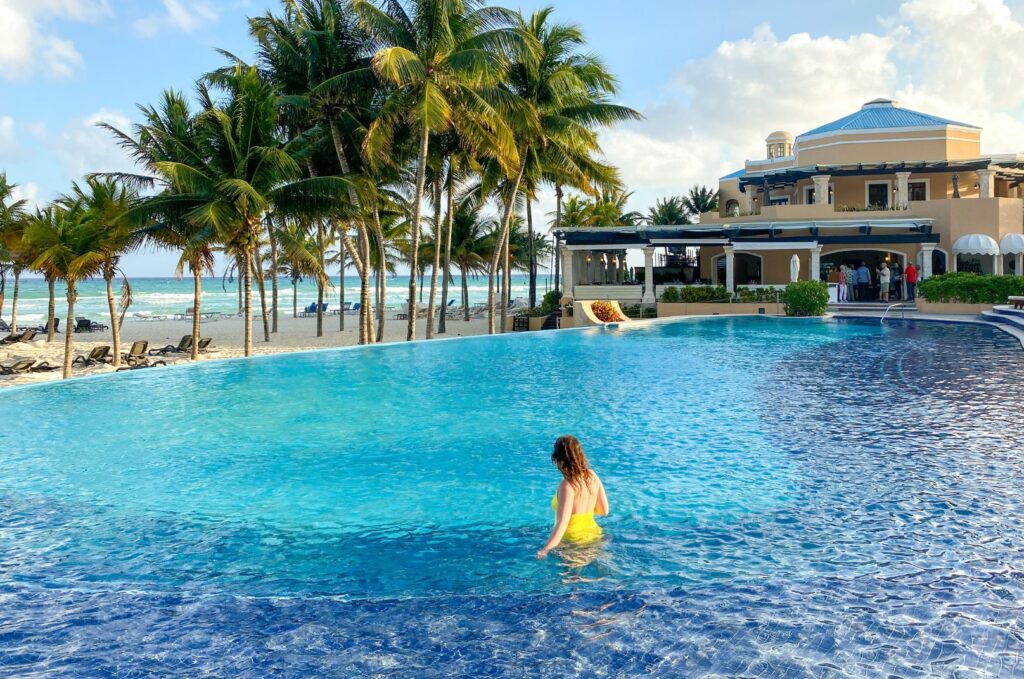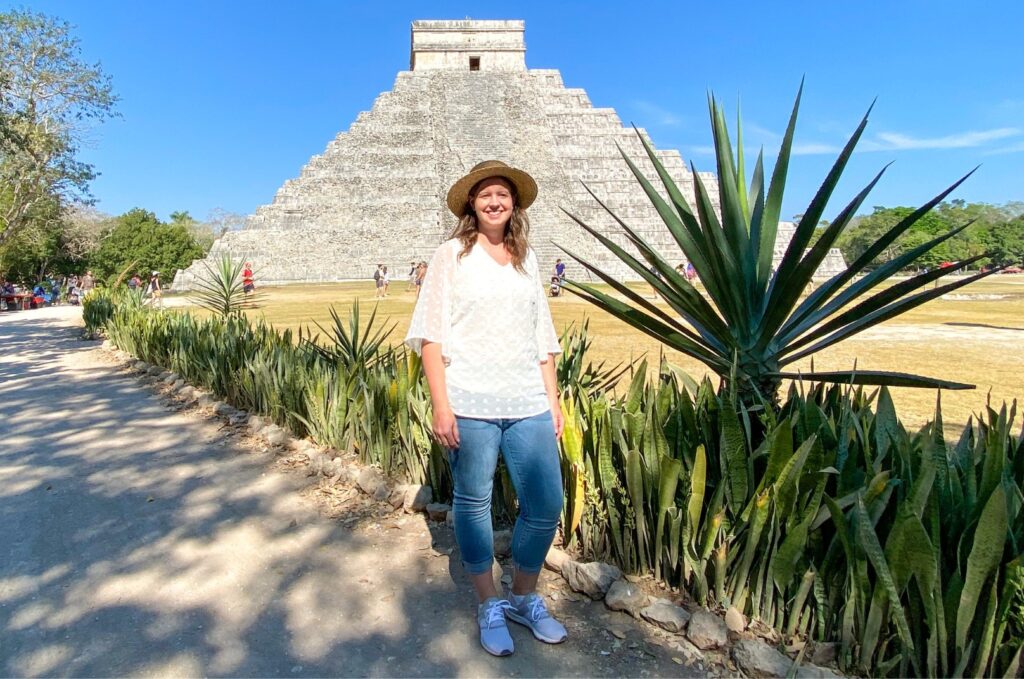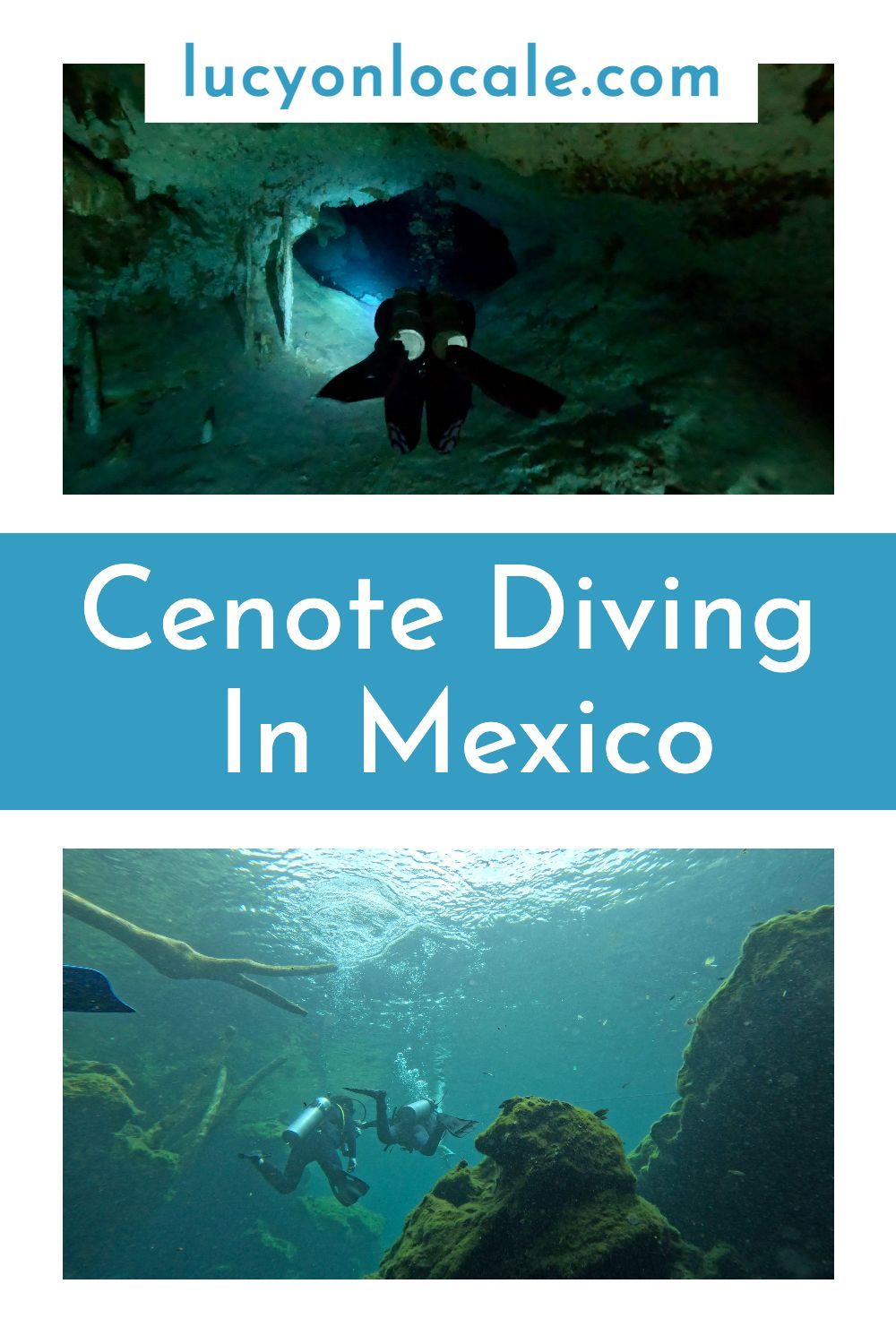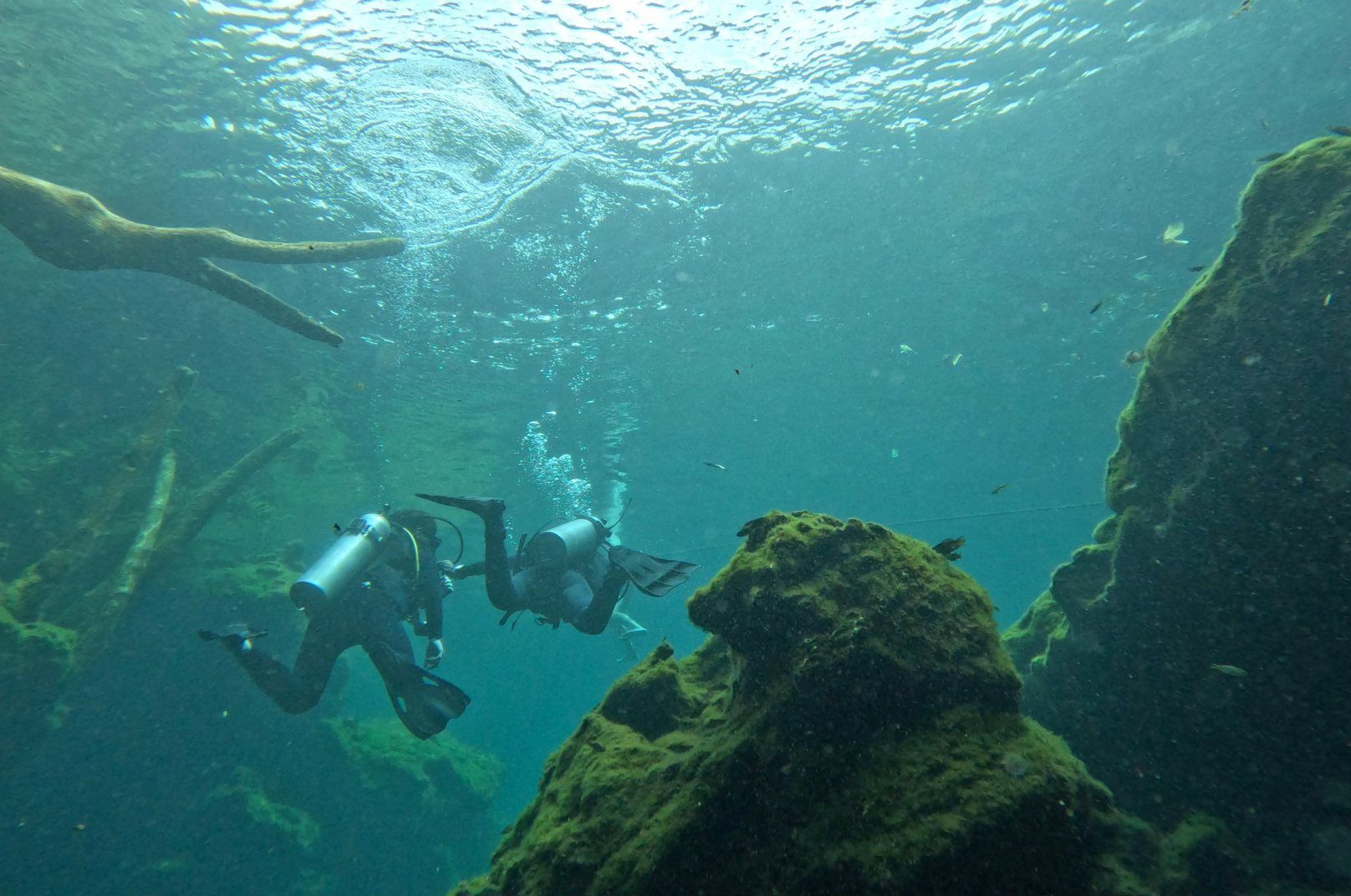
Why Cenote Diving Should Be on Your Bucket List
Imagine diving into crystal-clear water filled with intricate rock formations and amazing marine life. This is the world of cenote diving. Cenotes, natural sinkholes found in Mexico’s Yucatan Peninsula, are a wonderland of beauty and excitement. So cenote diving is an adventure that should be on every diver’s bucket list!
The Ultimate Riviera Maya Travel Guide
Some cenotes require a technical diving certification, but this post focuses on cenotes that only require an Open Water Diver certification.
In this article, I’ll share what makes cenote diving so unique, discuss the importance of responsible diving, and offer tips for preparing for your own cenote dive.
Pack your bags, grab your gear, and get ready to explore the wonders of cenote diving!

The Beauty of Cenotes
Once you descend into the depths of a cenote, leaving the snorkeling and Instagram-focused swimmers behind, you’ll be stunned by the beauty surrounding you. The crystal-clear water allows perfect visibility, giving you an unobstructed view of intricate rock formations and unique marine life.
The natural light that filters in from above illuminates the caverns, creating a surreal and breathtaking atmosphere. It’s no wonder that cenotes have been called “windows to the underworld” by the ancient Maya, who revered them as sacred entrances to Xibalba, the world of the dead.
As you dive through the underwater caves, you’ll feel like you’re in a different world altogether. The unique geography and geology of the cenotes create an otherworldly environment that can’t be found anywhere else. The beauty of cenotes is truly unparalleled, and it’s an experience that every adventurous traveler should see for themselves.

The Thrill of Diving in Cenotes
Diving in cenotes is not just a beautiful experience – it’s also an incredibly thrilling one. As you navigate through the underwater caverns, you’ll need excellent control of your buoyancy and trim.
Cenote diving differs from ocean diving in several ways. First, your guide will teach you modified hand signals that can be done with a dive light. Second, you must maintain consistent pacing and spacing as your guide navigates you through the underwater passageways.
Third, you usually have to gear up near where you park and walk your equipment down to a cenote dive entrance. You’ll need to be prepared to walk as much as a couple of hundred feet in your full scuba gear.
I’ve never felt claustrophobic diving in the ocean, but it did feel claustrophobic sometimes in cenotes because are cave walls and rock formations above, below, and on either side of you.
I don’t recommend cenote diving for new divers. It would be best if you had at least a couple of handfuls of dives in your log book before doing a cenote dive. But for those with some experience, it’s a unique and unforgettable way to explore the underwater world that can only be done on the Yucatan Peninsula!

Unique Marine Life
In addition to unique geological formations, cenotes are home to one-of-a-kind marine life. With over 200 species of fish, divers can witness creatures that can’t be found in any other diving environment.
Schools of mollies and catfish swim along the cave ceilings while tetras, dwarf cichlids, and blind cavefish lurk in the darkness of the caves.
One of the most fascinating creatures found in cenotes is the blind shrimp. These tiny shrimp have no eyes, but their other senses are heightened, making them experts at finding food and avoiding predators.
Cenotes also house several species of bats, which you can see when you surface in caverns.

Responsible Cenote Diving
Responsible Cenote Diving
Cenotes are delicate ecosystems that require responsible diving practices to preserve their unique creatures and habitats. The blind shrimp, bats, and other creatures that call the cenotes home are particularly vulnerable to human interference.
So as divers, we must be mindful of our impact on the environment and take measures to conserve these fragile ecosystems.
This includes not disturbing the sediment, avoiding contact with the delicate formations (just like you would with coral), and not wearing sunscreen, perfume, or other chemicals that can wash off into the fresh cenote water. It is also essential to follow regulations and guidelines from local authorities and dive operators to protect the cenotes.
By prioritizing responsible cenote diving practices, we can continue to enjoy these unique and awe-inspiring underwater worlds for years to come. And with proper preparation and guidance, we can make the most of our cenote diving adventure while minimizing our environmental impact.

Preparing for Your Cenote Diving Adventure
As with any scuba diving experience, proper preparation is critical to ensuring a safe and enjoyable adventure. But there are a few additional factors to consider when it comes to cenote diving.
First and foremost, it’s essential to choose a reputable dive operator. Look for operators who prioritize safety and environmental conservation and have experienced guides familiar with the specific cenotes you’ll visit.
More Dive Guides
A knowledgeable guide can enhance your experience and help ensure you stay within the guidelines and regulations that protect the cenotes’ delicate ecosystems. I used Pro Dive International.
Second, you’ll need some specific diving gear. In addition to your regular scuba equipment, you’ll need a full-body wet suit (cenote water is surprisingly cold) and an underwater light. So if you don’t have these items, ensure your dive operator rents them and any other equipment you’ll need.
Read More

Best Cenotes for Diving
By now, you’re (hopefully) convinced that cenote diving is an experience that should be on your bucket list. However, with so many cenotes to choose from, it can be overwhelming to decide where to begin. To help you, I’ve compiled a list of the best cenotes for diving.
Your dive guide might pre-select the cenotes for you, but most dive operators will accommodate requests.
First on the list is Dos Ojos, located in the Tulum area. This cenote is known for its unique topography, which includes two separate caves connected by a large cavern. You can expect to see stalactites, stalagmites, and bat colonies.
Next up is Tajma Ha Cenote, which offers a more challenging dive experience because of its deeper depths and tighter spaces. However, the rewards are worth it – you can admire beautiful rock formations, swim-throughs, and marine life.
Gran Cenote is the perfect choice for those seeking a more serene experience. This cenote has crystal clear waters and plenty of natural light, allowing for stunning views of the underwater landscape. It’s also home to a variety of fish species and turtles.
Last but not least, Chac Mool is a cenote offering beautiful underwater scenery and a unique cultural experience. The cenote is adjacent to a pre-Columbian temple, adding a layer of history and significance to the dive.

Takeaways
Cenote diving offers an unparalleled adventure and an opportunity to explore the beauty and diversity of a unique underwater world. As you plan your next trip to the Yucatan Peninsula, consider adding cenote diving to your bucket list and experience the thrill for yourself.
Remember to dive responsibly and preserve these natural wonders for future generations!

Shop My Dive Essentials

Plan The Rest of Your Trip

More Dive Guides

This article about cenote diving is not a sponsored post, and the thoughts and opinions expressed in this post about cenote diving are entirely my own. Some of the links in this post about cenote diving are affiliate links, and at no cost to you, I may earn a small commission from this post about cenote diving.
 Destinations
Destinations Packing
Packing Travel Tips
Travel Tips
 Photography
Photography Points & Miles
Points & Miles Credit Cards
Credit Cards